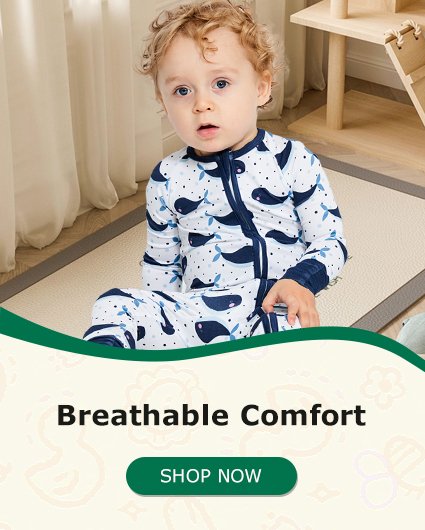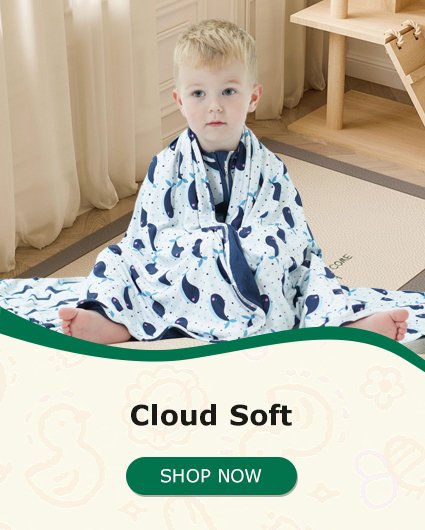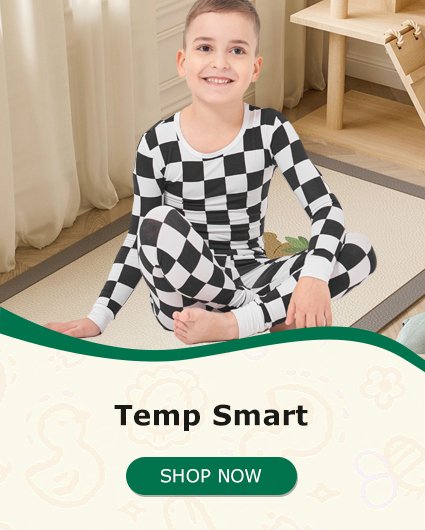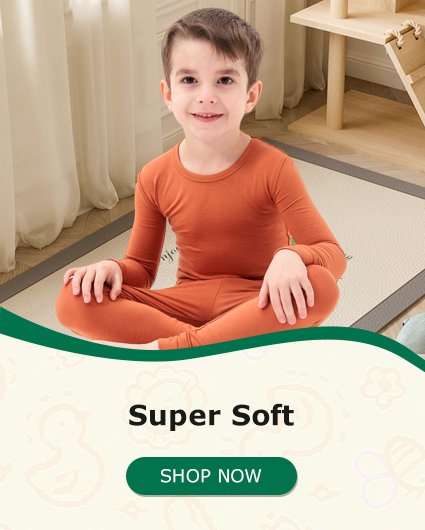How to Dress a Baby for Sleep
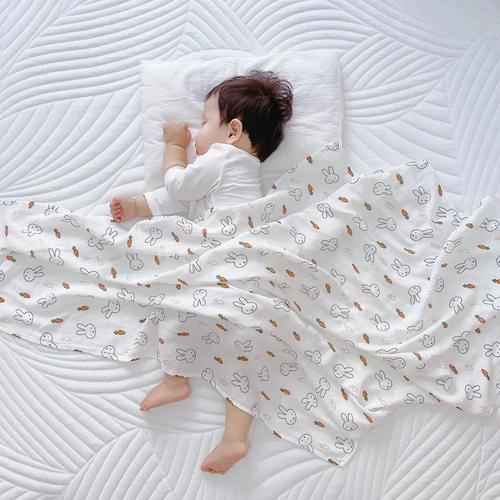
As you watch your little one yawn and rub their tiny eyes, all you want is for them to have the most peaceful and safe night’s rest possible. Every parent dreams of creating a cozy sleep environment that helps their baby drift off into dreamland with ease.
The good news? You don’t need anything complicated—just the right sleepwear.
baby wearing Sweet Bamboo Pajamas
Research shows that choosing the correct sleep clothing can regulate your baby’s temperature, prevent overheating, and make them feel snug and comfortable through the night. The trick is knowing how to dress them based on the season and room temperature. Fortunately, we’ve created a simple guide to help.
Let’s dive in!
First Steps
Start by checking the temperature of your baby’s room. The ideal sleep temperature for infants is between 68–72°F (20–22°C). This gives you a starting point for deciding how many layers they need.
Next, select a breathable base layer, such as a short-sleeved bamboo onesie or a lightweight cotton bodysuit. These fabrics are soft, gentle on skin, and help wick away moisture if your baby gets warm.
Next Steps
Once you’ve chosen a base layer, you can add a sleep sack or a wearable blanket. Unlike loose blankets, these provide warmth without the risk of covering your baby’s face.
For warmer nights, opt for a lightweight sleep sack with a lower tog rating. In cooler weather, a heavier sleep sack or footed pajamas can help keep your baby cozy.
Avoid overdressing—babies should wear just one more layer than you would be comfortable in yourself.
Final Steps
Do a quick comfort check before tucking your baby in. Feel the back of their neck or chest—it should feel warm but not sweaty. Hands and feet may feel cooler, which is normal.
Also, make sure there are no loose accessories, hats, or blankets in the crib. These can increase the risk of overheating or suffocation.
Important Considerations When Dressing Baby for Sleep
- Always place your baby on their back for safe sleep.
- Stop using sleep sacks with swaddle wings once your baby shows signs of rolling.
- Choose breathable fabrics such as bamboo or organic cotton to reduce irritation on sensitive skin.
- Adjust layers as the seasons change—babies may need lighter pajamas in summer and warmer options in winter.
How We Can Help
We’re here to make bedtime easier. Our bamboo baby clothes and sleepwear collections are designed with your little one’s comfort in mind. From buttery-soft pajamas to temperature-regulating sleep sacks, every piece is crafted to keep your baby cozy all night long.
Whether you’re looking for breathable summer sets or cuddly winter sleepwear, our collection has you covered. Shop now and discover the perfect bedtime essentials for your baby.
FAQ
Q1: Are bamboo baby clothes safe for newborns?
A1: Yes. Bamboo fabric is naturally soft, hypoallergenic, and gentle, making it perfect for newborns’ delicate skin.
Q2: Do bamboo clothes shrink after washing?
A2: Bamboo fabric may shrink slightly (about 3–5%) during the first wash, which is normal. We recommend washing in cold or lukewarm water and avoiding high-heat drying.
Q3: Which seasons are bamboo clothes suitable for?
A3: Bamboo fabric is breathable and moisture-wicking, keeping babies cool in summer and warm in winter, making it suitable for all seasons.
Q4: Do bamboo clothes require special care?
A4: No complicated care is needed. For best results, place them in a laundry bag and wash with similar soft fabrics. Avoid rough items to extend durability.
Q5: What are the advantages of bamboo baby clothes compared to cotton?
A5: Bamboo is softer than cotton, more breathable, and naturally antibacterial, providing extra comfort and protection for babies.

